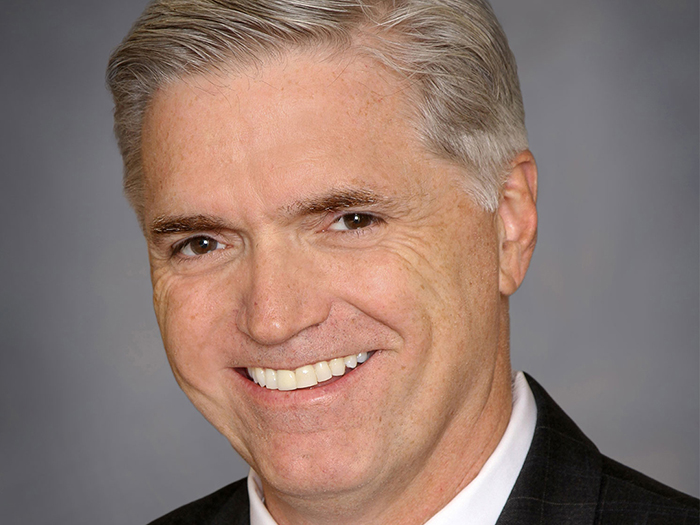Managing the New MICRA: Ways This California Law Affects Health Care

A newly minted revision of a California medical liability law merits close examination but is a tolerable result compared to what might have been, according to a trio of professional liability claims and underwriting veterans.
What’s known as California’s Medical Injury Compensation Reform Act (MICRA) came into being in the mid-1970s, as legislators, care providers, underwriters and other stakeholders sought a way to control pain and suffering damages to avoid bankrupting or losing care providers and visiting harrowing losses on their insurers.
The latest update to MICRA was signed into law by California Governor Gavin Newsom on May 23. Among other provisions, the new MICRA increases the existing $250,000 cap on non-economic damages and establishes scheduled increases over time. It also allows a higher cap for wrongful death cases.
How Will MICRA Affect Health Care?
According to Gina Harris, a Las Vegas-based regional claims executive for the Western region for ProAssurance, a health care liability insurer, it’s expected that the new MICRA will substantially increase frequency for health care providers and their insurers, but if there is a silver lining, its provisions at least make those exposures somewhat predictable, which actuaries and underwriters will appreciate.

Gina Harris, regional claims executive, ProAssurance
“I would say don’t panic,” Harris advised health care practitioners and their risk management partners who might be alarmed by this latest iteration of MICRA.
“We are going to continue writing business in California,” she said.
“We’re going to continue insuring people. From a claim standpoint, it doesn’t change what we’re going to do because our job is to defend good medicine.”
Her colleague Lucy Sam, a San Francisco-based regional vice president for underwriting with ProAssurance, echoed Harris’s measured reaction to California’s new law.
“Having predictability and the fact that we can forecast from a carrier’s perspective, as well as from a consumer’s perspective is very important,” Sam said.
The corporate roots of ProAssurance go back to the medical liability mutuals that were formed back in the 1970s to combat medical malpractice claims that drove insurance companies from the space and threatened to put physicians out of business.
“Our respective organizations have been around since 1975. We want to be there consistently for insureds and provide affordable MPL coverage to our clients,” Sam continued.
“We want to continue to provide high quality services of risk management, underwriting and claims. [The revised MICRA] is a big change, but I think the important part is it’s an equitable resolution. Had this gone to a ballot initiative, it’s hard to predict what could happen if MICRA had been voted out,” she said.
The New MICRA at a Glance
Here are some more details on the new version of MICRA:

Lucy Sam, regional vice president for underwriting, ProAssurance
- The new non-economic damages cap will increase to $350,000 on 1/1/2023 and by $40,000 per year for the next 10 years until it reaches $750,000. Once it reaches $750,000, it will increase 2% per year.
- The new wrongful death non-economic damages cap will be set at $500,000. For the next 10 years it will increase by $50,000 per year until it reaches $1 million. After that it will increase by 2% per year.
- The modernized MICRA allows for three caps per case depending on the category of healthcare provider or facility, as opposed to the previous version, which allowed only one. The new version sets a cap for health care providers, another one for health care facilities, and a third for providers, such as ambulance companies, which fall outside of those other two categories. An important part of the new law is that those separate caps can be stacked.
- The new MICRA also mandates that the cap that applies is the one that is in effect when the case ends. So, if a case lasts for five years, that’s the cap in play.
- The new provisions only apply to cases filed on or before January 1, 2023.
The new MICRA agreement maintains several important guardrails, including the one-year statute of limitations, option for binding arbitration, periodic payments, prevention of double recovery and limits on attorney’s fees.
Furthermore, a new protection was included to ensure that any expressions of sympathy, regret, and/or statements of fault by a provider are not admissible in a case.
“So there’s an incentive now for attorneys to possibly extend cases so that they can get the higher cap,” Harris said.
As bracing as these cap changes are, an initiative to eliminate all of MICRA’s protections had already qualified to be on the November ballot. Agreeing to the legislative changes to MICRA now required the proponents to remove the ballot initiative immediately. Had the initiative been voted on and passed, it would have been devastating to health care providers and their insurers.
“If this went to a vote and lost there would be no guardrails, it would just be wide open,” Harris ventured.
“So at least with this version, there is some predictability, which I am sure underwriters and actuaries appreciate.”
Differences in Medical Liability from State to State
As an organization that provides professional liability insurance in all 50 states, ProAssurance has a broad perspective on the medical liability landscape.
Caps on medical malpractice cases vary from state to state, and some states have no caps at all, said Shep Tapasak, a senior vice president for specialty underwriting with ProAssurance, who is based in the Atlanta area.
“Every state is unique,” said Tapasak. “I believe 31 states have caps on non-economic damages, what we also know as pain and suffering.”

Shep Tapasak, senior vice president of specialty underwriting, ProAssurance
As to the situation in California, the ProAssurance team is again recommending patience and fortitude. They also want insureds to know that they are not going anywhere.
“We’re going to continue to do business as usual,” said Sam.
“We don’t want our clients to panic. We’re not filing for any immediate rate changes. We will continue to adhere to our standards and evaluate the risks as we do now based on the unique exposures and claims to develop the appropriate coverages and pricing,” she continued.
The frequency of medical malpractice claims overall in California has been going down, Harris said, perhaps due to the restrictions brought on by the pandemic. But she said the new MICRA will probably spur an increase in the frequency of claims due to the way that it may incentivize plaintiff’s attorneys.
“It gives plaintiff’s attorneys the ability to collect more fees, which gives them more incentive to file more cases. Plus they have the extra ability to get a larger pain and suffering cap. Plus now you have the ability to stack,” she said.
Medical malpractice cases, due to their dependence on expert witnesses and other factors, can be expensive to file and litigate. That was previously a limiting factor in California but may not be now, Harris said.
“Some attorneys who were staying away from medical malpractice cases due to cost are going to get back in and try their hand because the upside of a win for them is more substantial than it was before,” she said.
Tapasak said that if case filings increase and premium increases do come, what many may not understand is that those costs will eventually be passed on to the consumer.
All of us wrestle with health care costs that never seem to moderate, and the higher costs that can be unleashed in the case of medical malpractice claims are a part of those costs. &










